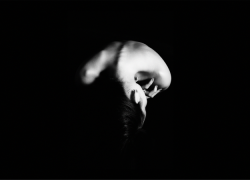
Words by Brooke Munday
Deafferent Theatre is a brand new, Melbourne-based theatre company premiering at the 2016 Melbourne Fringe Festival. Boasting bilingual shows in Auslan (Australian sign language) and English, Deafferent performances are accessible for both hearing and deaf audiences. Their opening show, Black is the Colour, will debut at the Melbourne Fringe Festival in September, featuring casts of both deaf and hearing performers.
Black is the Colour tells the story of two friends caught on either side of a rift in their relationship. The narrative delves into “universal issues” including domestic violence, loss, and grief; themes the play’s director, Jessica Moody, says are a huge problem in the deaf community. “One in five people will be affected by domestic violence and out of those one in five, two in three are deaf.So it’s a huge number of deaf people who are affected by this.”
Actress Ilana Gelbart says that at the heart of the show are shared experiences. “Yes we’re exploring these through a different perspective but the fact is they are universal stories and people—regardless of their background or culture or linguistic differences—are going to recognise these themes.
“We’re exploring not only the usually voiceless survivors of domestic violence but also the usually voiceless deaf community.”
The show itself will be performed in Auslan with English captions for the hearing audience.
“I think our talking point for Black is the Colour is that it’s a new way of making an accessible show. And I think that we’re incorporating creative captioning that hasn’t really been used in theatre in Australia,” Gelbart says.
Black is the Colour actress, dancer, and choreographer, Anna Seymour is also debuting her first self-choreographed show at the Melbourne Fringe Festival.
Distraction Society is a duet featuring one deaf and one hearing dancer. The show looks at the distractions in relationships, from intimate moments to bigger complications, and all without a single word spoken.
“We’re both incredibly passionate about duets as an art form,” says Seymour. “I’ve seen a lot of dances that include spoken text and I want that removed all together […] The story will all be told through movement.”
Like Black is the Colour, the dance’s unique approach makes it accessible for both deaf and hearing audiences. It’s this openness that Deafferent Theatre prides itself on and sees as a defining quality of its productions.
“I think it’s important for [viewers] to be open minded and to open themselves to an experience,” Moody says. “If you’re wanting to explore off the beaten path of standard drama, this is for you.”

